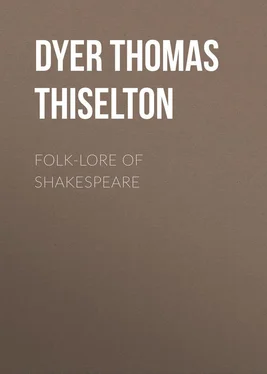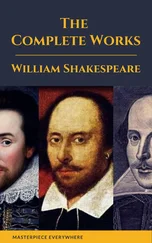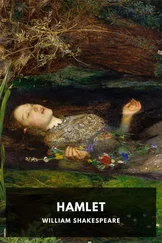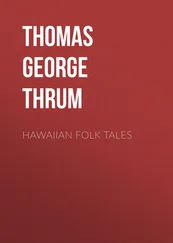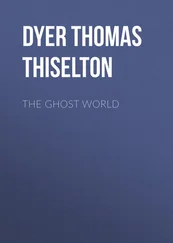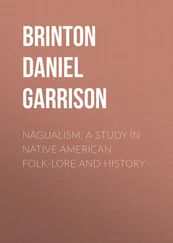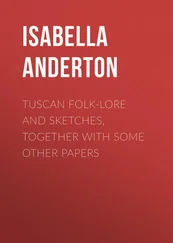Thomas Dyer - Folk-lore of Shakespeare
Здесь есть возможность читать онлайн «Thomas Dyer - Folk-lore of Shakespeare» — ознакомительный отрывок электронной книги совершенно бесплатно, а после прочтения отрывка купить полную версию. В некоторых случаях можно слушать аудио, скачать через торрент в формате fb2 и присутствует краткое содержание. Жанр: foreign_antique, foreign_prose, на английском языке. Описание произведения, (предисловие) а так же отзывы посетителей доступны на портале библиотеки ЛибКат.
- Название:Folk-lore of Shakespeare
- Автор:
- Жанр:
- Год:неизвестен
- ISBN:нет данных
- Рейтинг книги:4 / 5. Голосов: 1
-
Избранное:Добавить в избранное
- Отзывы:
-
Ваша оценка:
- 80
- 1
- 2
- 3
- 4
- 5
Folk-lore of Shakespeare: краткое содержание, описание и аннотация
Предлагаем к чтению аннотацию, описание, краткое содержание или предисловие (зависит от того, что написал сам автор книги «Folk-lore of Shakespeare»). Если вы не нашли необходимую информацию о книге — напишите в комментариях, мы постараемся отыскать её.
Folk-lore of Shakespeare — читать онлайн ознакомительный отрывок
Ниже представлен текст книги, разбитый по страницам. Система сохранения места последней прочитанной страницы, позволяет с удобством читать онлайн бесплатно книгу «Folk-lore of Shakespeare», без необходимости каждый раз заново искать на чём Вы остановились. Поставьте закладку, и сможете в любой момент перейти на страницу, на которой закончили чтение.
Интервал:
Закладка:
T. F. Thiselton Dyer
Folk-lore of Shakespeare
PREFACE
It would be difficult to overestimate the value which must be attached to the plays of Shakespeare in connection with the social life of the Elizabethan age. Possessed of a rich treasury of knowledge of a most varied kind, much of which he may be said to have picked up almost intuitively, he embellished his writings with a choice store of illustrations descriptive of the period in which he lived. Apart, too, from his copious references to the manners and customs of the time, he seems to have had not only a wide knowledge of many technical subjects, but also an intimate acquaintance with the folk-lore of bygone days. How far this was the case may be gathered from the following pages, in which are collected and grouped together, as far as arrangement would permit, the various subjects relating to this interesting and popular branch of our domestic history. It only remains for me to add that the edition of the poet’s plays made use of is the “Globe,” published by Messrs. Macmillan.
T. F. Thiselton Dyer.CHAPTER I
FAIRIES
The wealth of Shakespeare’s luxuriant imagination and glowing language seems to have been poured forth in the graphic accounts which he has given us of the fairy tribe. Indeed, the profusion of poetic imagery with which he has so richly clad his fairy characters is unrivalled, and the “Midsummer-Night’s Dream” holds a unique position in so far as it contains the finest modern artistic realization of the fairy kingdom. Mr. Dowden, in his “Shakspere Primer” (1877, pp. 71, 72) justly remarks: “As the two extremes of exquisite delicacy, of dainty elegance, and, on the other hand, of thick-witted grossness and clumsiness, stand the fairy tribe and the group of Athenian handicraftsmen. The world of the poet’s dream includes the two – a Titania, and a Bottom the weaver – and can bring them into grotesque conjunction. No such fairy poetry existed anywhere in English literature before Shakspere. The tiny elves, to whom a cowslip is tall, for whom the third part of a minute is an important division of time, have a miniature perfection which is charming. They delight in all beautiful and dainty things, and war with things that creep and things that fly, if they be uncomely; their lives are gay with fine frolic and delicate revelry.” Puck, the jester of fairyland, stands apart from the rest, the recognizable “lob of spirits,” a rough, “fawn-faced, shock-pated little fellow, dainty-limbed shapes around him.” Judging, then, from the elaborate account which the poet has bequeathed us of the fairies, it is evident that the subject was one in which he took a special interest. Indeed, the graphic pictures he has handed down to us of
“Elves of hills, brooks, standing lakes and groves;
And ye, that on the sands with printless foot,
Do chase the ebbing Neptune, and do fly him
When he comes back; you demy-puppets that
By moonshine do the green-sour ringlets make
Whereof the ewe not bites,” etc.,
show how intimately he was acquainted with the history of these little people, and what a complete knowledge he possessed of the superstitious fancies which had clustered round them. In Shakespeare’s day, too, it must be remembered, fairies were much in fashion; and, as Johnson remarks, common tradition had made them familiar. It has also been observed that, well acquainted, from the rural habits of his early life, with the notions of the peasantry respecting these beings, he saw that they were capable of being applied to a production of a species of the wonderful. Hence, as Mr. Halliwell-Phillipps 1 1 “Illustrations of the Fairy Mythology of ‘A Midsummer-Night’s Dream,’” 1845, p. xiii.
has so aptly written, “he founded his elfin world on the prettiest of the people’s traditions, and has clothed it in the ever-living flowers of his own exuberant fancy.” Referring to the fairy mythology in the “Midsummer-Night’s Dream,” it is described by Mr. Keightley 2 2 “Fairy Mythology,” p. 325.
as an attempt to blend “the elves of the village with the fays of romance.” His fairies agree with the former in their diminutive stature – diminished, indeed, to dimensions inappreciable by village gossips – in their fondness for dancing, their love of cleanliness, and their child-abstracting propensities. Like the fays, they form a community, ruled over by the princely Oberon and the fair Titania. There is a court and chivalry; Oberon would have the queen’s sweet changeling to be a “knight of his train, to trace the forests wild.” Like earthly monarchs, he has his jester, “that shrewd and knavish sprite called Robin Goodfellow.”
Of the fairy characters treated by Shakespeare may be mentioned Oberon, king of fairyland, and Titania, his queen. They are represented as keeping rival courts in consequence of a quarrel, the cause of which is thus told by Puck (“Midsummer-Night’s Dream,” ii. 1):
“The king doth keep his revels here to-night:
Take heed the queen come not within his sight;
For Oberon is passing fell and wrath,
Because that she as her attendant hath
A lovely boy, stolen from an Indian king;
She never had so sweet a changeling;
And jealous Oberon would have the child
Knight of his train, to trace the forests wild;
But she perforce withholds the loved boy,
Crowns him with flowers and makes him all her joy;
And now they never meet in grove or green,
By fountain clear, or spangled starlight sheen,” etc.
Oberon first appears in the old French romance of “Huon de Bourdeaux,” and is identical with Elberich, the dwarf king of the German story of Otuit in the “Heldenbuch.” The name Elberich, or, as it appears in the “Nibelungenlied,” Albrich, was changed, in passing into French, first into Auberich, then into Auberon, and finally became our Oberon. He is introduced by Spenser in the “Fairy Queen” (book ii. cant. i. st. 6), where he describes Sir Guyon:
“Well could he tournay, and in lists debate,
And knighthood tooke of good Sir Huon’s hand,
When with King Oberon he came to faery land.”
And in the tenth canto of the same book (stanza 75) he is the allegorical representative of Henry VIII. The wise Elficleos left two sons,
“of which faire Elferon,
The eldest brother, did untimely dy;
Whose emptie place the mightie Oberon
Doubly supplide, in spousall and dominion.”
“Oboram, King of Fayeries,” is one of the characters in Greene’s “James the Fourth.” 3 3 Aldis Wright’s “Midsummer-Night’s Dream,” 1877, Preface, pp. xv., xvi.; Ritson’s “Fairy Mythology,” 1875, pp. 22, 23.
The name Titania for the queen of the fairies appears to have been the invention of Shakespeare, for, as Mr. Ritson 4 4 Essay on Fairies in “Fairy Mythology of Shakspeare,” p. 23.
remarks, she is not “so called by any other writer.” Why, however, the poet designated her by this title, presents, according to Mr. Keightley, 5 5 “Fairy Mythology,” 1878, p. 325.
no difficulty. “It was,” he says, “the belief of those days that the fairies were the same as the classic nymphs, the attendants of Diana. The fairy queen was therefore the same as Diana, whom Ovid (Met. iii. 173) styles Titania.” In Chaucer’s “Merchant’s Tale” Pluto is the king of faerie, and his queen, Proserpina, “who danced and sang about the well under the laurel in January’s garden.” 6 6 Notes to “A Midsummer-Night’s Dream,” by Aldis Wright, 1877, Preface, p. xvi.
Интервал:
Закладка:
Похожие книги на «Folk-lore of Shakespeare»
Представляем Вашему вниманию похожие книги на «Folk-lore of Shakespeare» списком для выбора. Мы отобрали схожую по названию и смыслу литературу в надежде предоставить читателям больше вариантов отыскать новые, интересные, ещё непрочитанные произведения.
Обсуждение, отзывы о книге «Folk-lore of Shakespeare» и просто собственные мнения читателей. Оставьте ваши комментарии, напишите, что Вы думаете о произведении, его смысле или главных героях. Укажите что конкретно понравилось, а что нет, и почему Вы так считаете.
